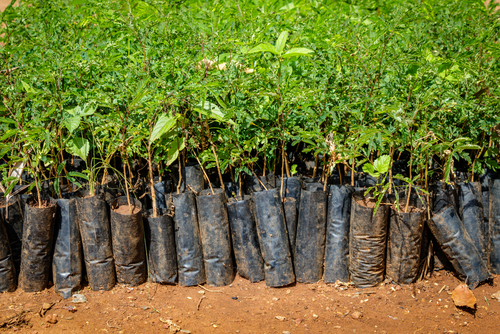News
What is a Net Zero Economy?

President Biden re-entered the United States in the Paris Agreement. This is an international treaty first signed in 2015 in which countries around the globe committed to mitigating climate change. Specifically, the goal of the Paris Accord is to limit global warming to no more than 1.5 degrees Celsius above pre-industrial levels.
This objective would generate what is called a net zero global economy, which means creating a balance between the amount of greenhouse gases produced and the amount of greenhouse gasses removed from the atmosphere. The main engine that places carbon back into the soil is healthy vegetation that grows all years round, these are called cover crops and reforestation. You can help by using the Ecosia search engine.
The initial benchmark is to achieve net zero carbon dioxide emissions by 2050 and net zero emissions of all greenhouse gases by 2070. However, accomplishing these lofty goals will require a remarkable transformation of the global economy and global farming practices.
A way to measure global warming is through “temperature alignment” – a forward-looking benchmark that compares the level of emissions today against the potential for reducing them by a certain date in the future. The measure can be applied to a specific business, government, or investment portfolio.
For investors, global greening provides an opportunity to invest in companies positioning for a future net zero economy. After all, it’s important to recognize that climate risk represents substantial investment risk. Companies that prepare for the transition to sustainable energy sources will be able to deliver long-term returns, while those that do not could become obsolete.
If Net Zero is your path consider the following steps to align your investment allocation with the goals of a net zero economy. For example:
- Reduce your exposure to high-carbon emitters and companies not making forward-looking commitments to transform to the net zero economy.
- Prioritize investment decisions based on companies actively reducing reliance on fossil fuels and meeting science-based targets.
- Target specific sustainable sectors (e.g., clean energy, green bonds) based on your asset allocation strategy – and diversify investments among those holdings.
- Monitor ongoing research and available data to measure temperature alignment to ensure your issuers and investments are meeting published transition plans. This benchmark should be reviewed with the same rigor as traditional financial data.
The United States and the entire world have a choice to reduce the global. However, the effort also offers an opportunity to invest in climate innovation. The future will bring the survival of the fittest, is your portfolio ready.
Disclaimer ![]()
Similar news
Estate planning is critical for high-net-worth individuals and family offices to protect their assets and ensure a smooth wealth transfer to the next generation. Whether your…
Read MoreRequired minimum distributions (RMDs) from traditional IRAs and 401(k)s often become a significant tax burden during retirement. As the percentage of your IRA that must be…
Read MoreThe One Big Beautiful Bill (OBBB) brings a wave of changes that could significantly alter the estate planning landscape—especially for high-net-worth individuals. At FLSV, we believe…
Read MoreContact Us
West Palm Beach, FL 33401 (561) 567-7900